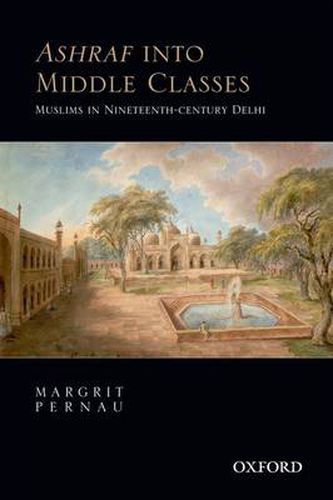Readings Newsletter
Become a Readings Member to make your shopping experience even easier.
Sign in or sign up for free!
You’re not far away from qualifying for FREE standard shipping within Australia
You’ve qualified for FREE standard shipping within Australia
The cart is loading…






Nineteenth-century Delhi was marked by a curious mixture of political upheaval and cultural resurgence. Drawing on a wide variety of little-known sources in Urdu and Persian, apart from the more conventional British records, this book provides a revelatory and vivid narrative of Muslims in the period covering the British conquest in 1803 to the end of the Khilafat movement in 1922. Moving away from the tendency of studies on Muslims to focus on religious identity, this book allows us to historicize Islam and socially contextualize its many manifestations.
Treating identities as inherently dynamic and ever changing, Pernau argues that religious identity became central for Muslims only in the last third of the nineteenth century, and this was closely linked with the creation of a middle class whose members described themselves as ashraf, or ‘men from a good family’. The new concept of respectability or sharafat on which the middle class was based allowed it to, at once, draw a distance from the old nobility, bring the learned section of the community closer to the businessmen, and demarcate it sharply from the subalterns.
The book focuses on the agency of historical actors-their perceptions and memories-to help us understand what it means to be a ‘Muslim’ as well as fathom the varied interactions between identities defined by religion, language, geography, and gender. In many ways, the book is itself a dialogue between Indian and European historiography, and will interest not just academics but also ‘Delhi and Urdu lovers’.
$9.00 standard shipping within Australia
FREE standard shipping within Australia for orders over $100.00
Express & International shipping calculated at checkout
Nineteenth-century Delhi was marked by a curious mixture of political upheaval and cultural resurgence. Drawing on a wide variety of little-known sources in Urdu and Persian, apart from the more conventional British records, this book provides a revelatory and vivid narrative of Muslims in the period covering the British conquest in 1803 to the end of the Khilafat movement in 1922. Moving away from the tendency of studies on Muslims to focus on religious identity, this book allows us to historicize Islam and socially contextualize its many manifestations.
Treating identities as inherently dynamic and ever changing, Pernau argues that religious identity became central for Muslims only in the last third of the nineteenth century, and this was closely linked with the creation of a middle class whose members described themselves as ashraf, or ‘men from a good family’. The new concept of respectability or sharafat on which the middle class was based allowed it to, at once, draw a distance from the old nobility, bring the learned section of the community closer to the businessmen, and demarcate it sharply from the subalterns.
The book focuses on the agency of historical actors-their perceptions and memories-to help us understand what it means to be a ‘Muslim’ as well as fathom the varied interactions between identities defined by religion, language, geography, and gender. In many ways, the book is itself a dialogue between Indian and European historiography, and will interest not just academics but also ‘Delhi and Urdu lovers’.